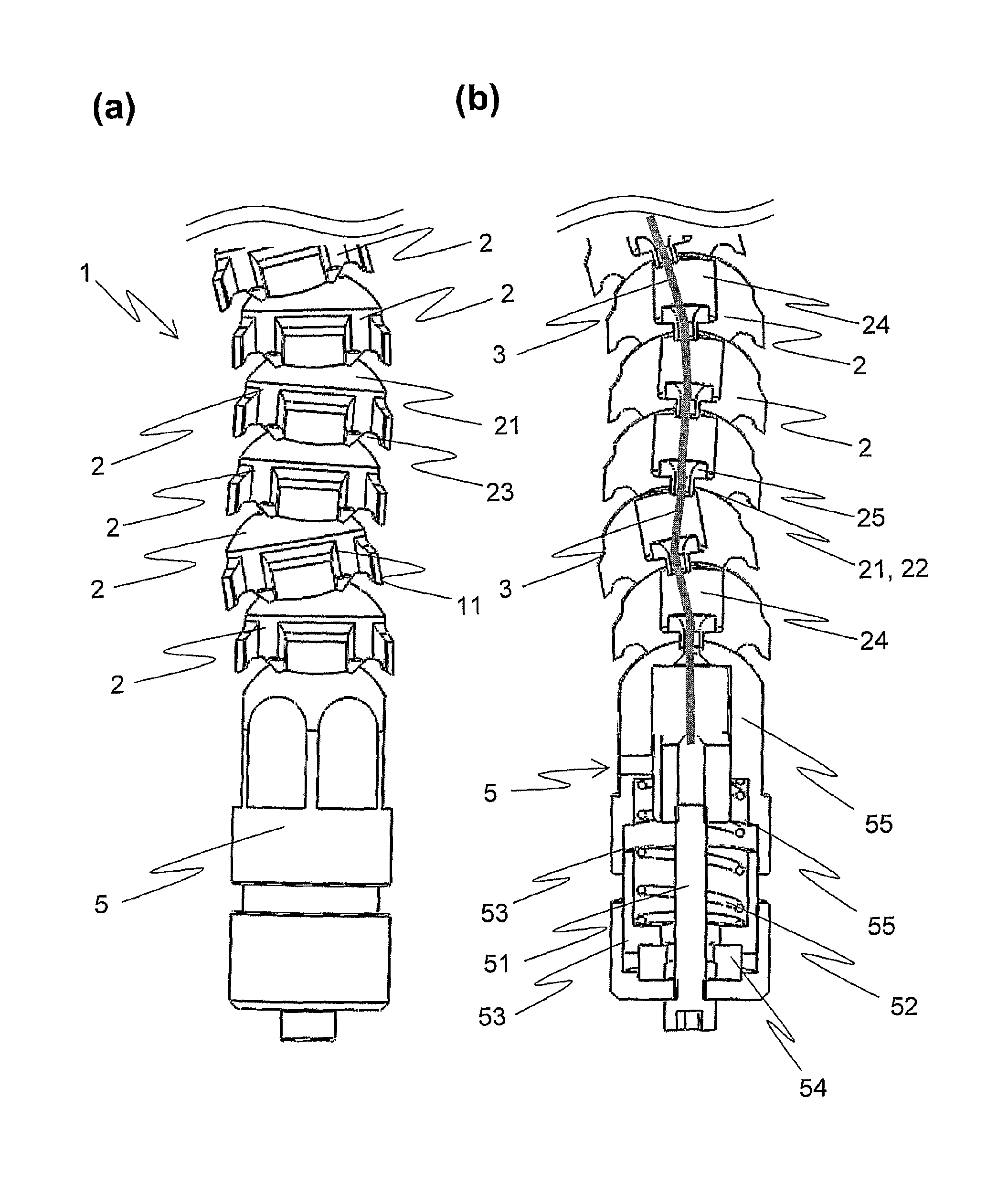Device for externally fixing bone fractures
a technology for fixing devices and bone fractures, applied in invalid friendly devices, medical science, surgery, etc., can solve the problems of increasing the danger of post-operative infection, affecting the safety of patients, and the procedure can take a very long time, so as to reduce the risk of bone fractures, the device is fast and dimensionally stable, and the effect of simple reduction
- Summary
- Abstract
- Description
- Claims
- Application Information
AI Technical Summary
Benefits of technology
Problems solved by technology
Method used
Image
Examples
Embodiment Construction
[0030]A possible embodiment of a device 1 according to the invention for the external fixation of bone fractures is shown in FIG. 1, (a) in side view, and (b) in a longitudinal section.
[0031]The rear end of the support 11 of the device 1 is shown, comprising the six rearmost joint elements 2 and, at the end, a tensioning device 5 for generating the tensile force needed for stiffening the device 1. The tensile force element 3 running along the entire length of the support 11 extends from the tensioning element 5 through the longitudinal passages 24 of the joint elements 2 and finishes, at a front end (not shown) of the support, in an abutment which takes up an applied tensile force and transmits this to the joint elements 2. The tensile force element is preferably designed as a fiber bundle which, with the least possible thickness, has the greatest possible tensile strength. Suitable bundles for this purpose are, for example, wire bundles, carbon fiber bundles, or bundles made of oth...
PUM
 Login to View More
Login to View More Abstract
Description
Claims
Application Information
 Login to View More
Login to View More - R&D
- Intellectual Property
- Life Sciences
- Materials
- Tech Scout
- Unparalleled Data Quality
- Higher Quality Content
- 60% Fewer Hallucinations
Browse by: Latest US Patents, China's latest patents, Technical Efficacy Thesaurus, Application Domain, Technology Topic, Popular Technical Reports.
© 2025 PatSnap. All rights reserved.Legal|Privacy policy|Modern Slavery Act Transparency Statement|Sitemap|About US| Contact US: help@patsnap.com



